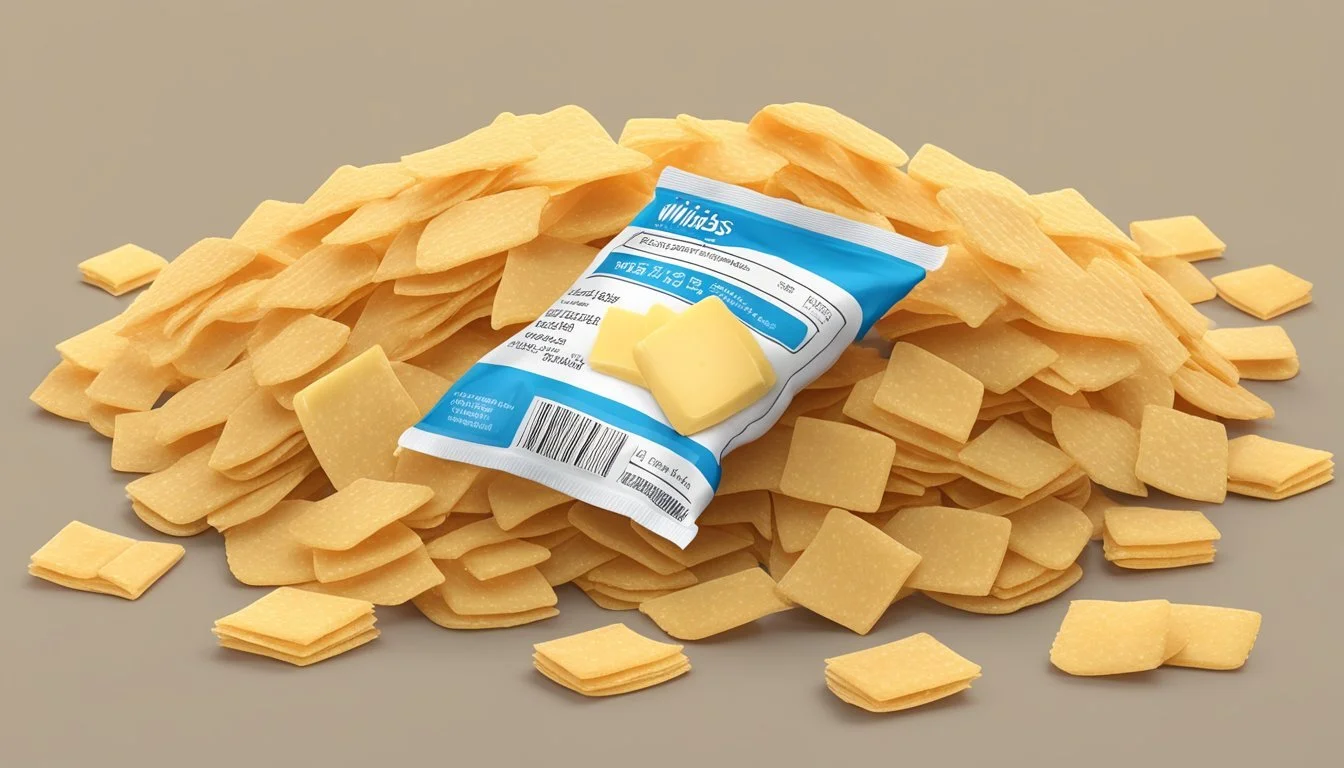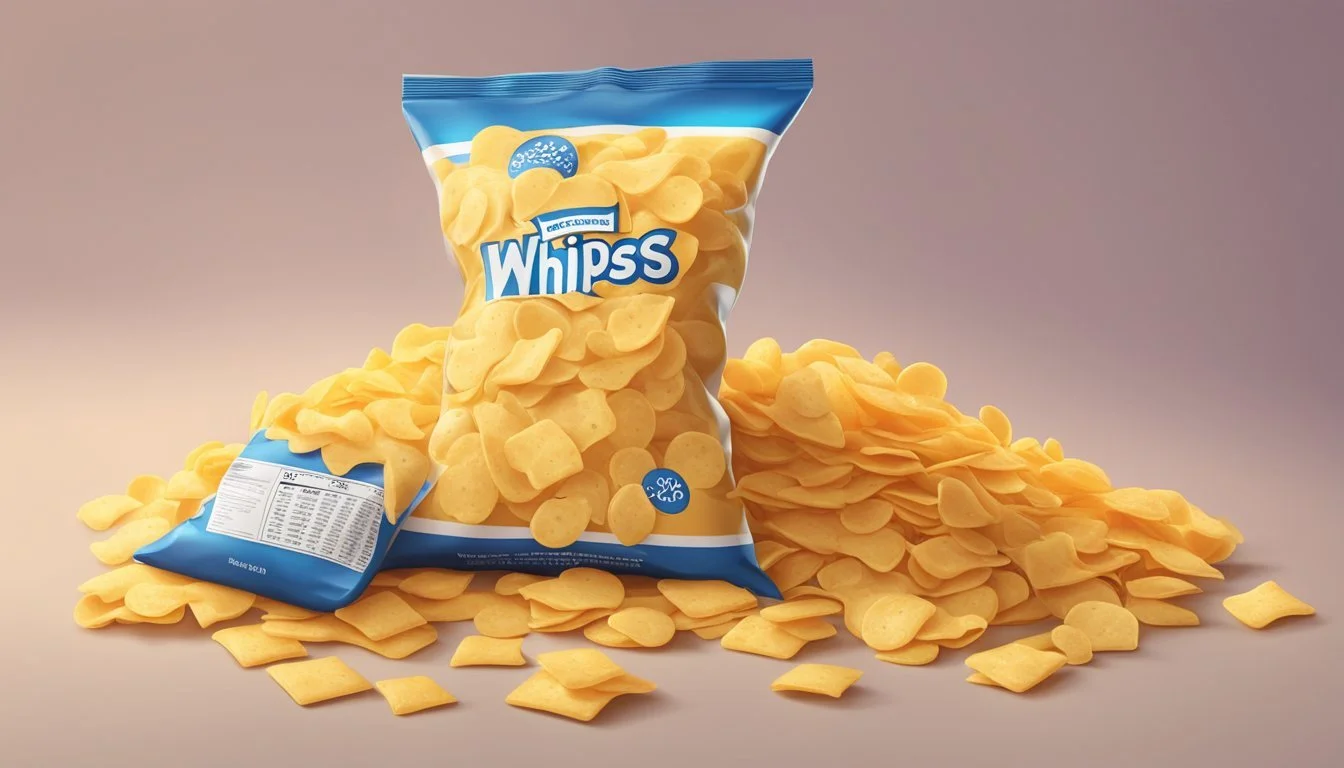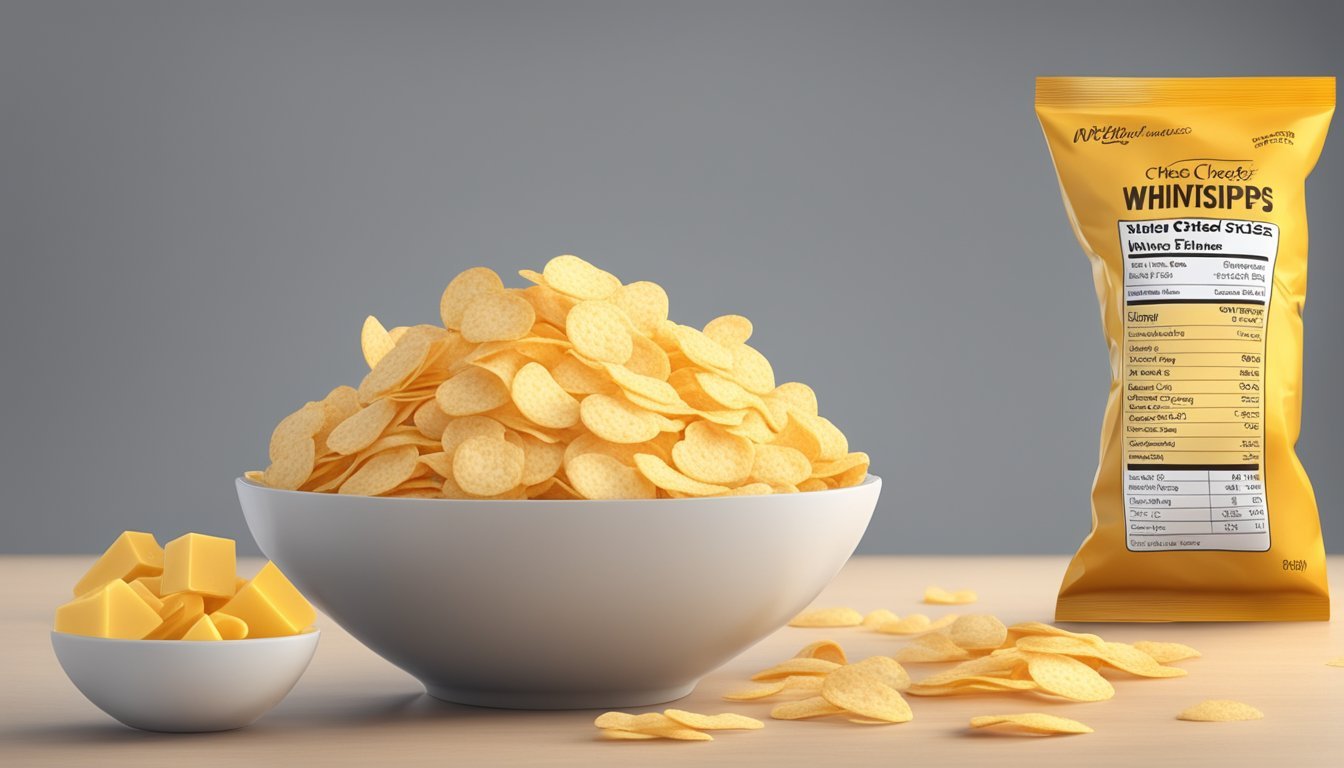How Many Servings of Whisps Cheese Crisps Is Too Much
Expert Dietary Insights
For those who love to snack on Whisps Cheese Crisps, determining the right serving size is crucial. These tasty crisps, made from 100% real artisanal cheese, offer a delicious, keto-friendly snack option. However, moderation is key given their nutritional content.
Each serving of Whisps Parmesan Cheese Crisps contains approximately 150 calories, 10 grams of fat, and 1 gram of carbohydrates. Consuming more than two to three servings daily can quickly add up in calories and fat, potentially upsetting balanced dietary goals. Ensuring portion control can help maintain a healthy diet while enjoying this crunchy treat.
Finding the balance between enjoyment and health is essential. With their convenient serving size, Whisps Cheese Crisps can be part of a balanced diet when consumed mindfully. Remember, monitoring intake helps keep dietary plans on track without sacrificing flavor and satisfaction.
Understanding Whisps Cheese Crisps
Whisps Cheese Crisps are a popular snack made from 100% real cheese. These crisps come in various flavors, including Parmesan Cheese Crisps and Cheddar Cheese Crisps.
Each crisp is crafted by master cheesemakers who bake the cheese into light, crunchy bites.
Ingredients include aged cheese and cheese cultures. For instance, Parmesan crisps are made from aged Parmesan cheese, delivering a savory and satisfying flavor. Similarly, Cheddar crisps are made from aged Cheddar cheese.
Whisps Cheese Crisps contain 13g of protein for Parmesan and 10g for Cheddar, with each serving providing significant calcium. They have 0g of sugar and 1g of carbs per serving.
These snacks are keto-friendly, gluten-free, and lactose-free, appealing to health-conscious snackers.
Whisps pair well with dips, soups, salads, and appetizers. They are also school-safe, making them a convenient choice for lunches.
Nutritional Profile of Whisps Cheese Crisps
Whisps Parmesan Cheese Crisps offer a rich and tasty snack option. Each serving size is typically 28 grams or about 19 crisps.
A single serving contains 150 calories. This makes them a moderate choice for a snack, especially considering the calorie count.
The protein content stands out with 13 grams per serving, making them a suitable option for those looking to increase their protein intake.
Carbohydrate content is minimal at 1 gram per serving, making these crisps a favorable option for low-carb diets. Of this, sugar is 0 grams, ensuring there are no added sugars to worry about.
The fat content is robust with total fat at 10 grams, including saturated fat at 7 grams. This might be a point to consider for those watching their fat intake.
Sodium levels are relatively high at 350 milligrams per serving, which can contribute to the daily intake significantly.
Vitamins and minerals present include Calcium, providing 28% of the Daily Value (DV), and Vitamin A at 10% of the DV. Iron and Potassium are available in smaller amounts, with Iron at 1% DV and Potassium at 40 milligrams.
The crisps are also gluten-free and lactose-free, adding to their appeal for those with dietary restrictions.
With no fiber content, those needing dietary fiber should consider complementing the crisps with fiber-rich foods.
Whisps Parmesan Cheese Crisps can be a flavorful and protein-packed snack when consumed in moderation, keeping in mind their nutritional profile.
Dietary Considerations
Whisps cheese crisps provide options for those seeking gluten-free, school-safe, and lactose-free snacks. It is essential to understand the dietary advantages and limitations of each variety to make informed choices.
Gluten-Free and School-Safe Options
Whisps cheese crisps are gluten-free, making them suitable for individuals with celiac disease or gluten sensitivity. These snacks are crafted from 100% real cheese, ensuring they meet dietary needs for those avoiding gluten.
Additionally, Whisps crisps are considered school-safe, meaning they do not contain common allergens such as nuts. This makes them an excellent choice for school lunches or snacks, adhering to many school dietary policies.
Lactose-Free and Vegan Varieties
Choosing snacks can be challenging for individuals with lactose intolerance. Whisps offers lactose-free options, such as their Parmesan crisps, which allow enjoyment without digestive discomfort linked to lactose. This makes them accessible to those who need to avoid lactose.
However, it is essential to note that Whisps cheese crisps are not vegan as they contain dairy. For those maintaining a vegan diet, it's advisable to seek out plant-based alternatives that cater to their dietary preferences.
The Role of Whisps Cheese Crisps in a Balanced Diet
Whisps Cheese Crisps can be a tasty and convenient snack option, especially when trying to maintain a balanced diet.
Each serving of Whisps Parmesan Cheese Crisps contains about 150 calories, 13 grams of protein, and only 1 gram of carbohydrates. This makes them a suitable choice for those following low-carb or ketogenic diets.
Being made from 100% real cheese, they fit well within a moderate effort to keep protein intake high.
Incorporating Whisps Cheese Crisps in moderation can help people meet their daily calorie needs without compromising taste. They are particularly useful for individuals who need a quick protein boost after engaging in moderate physical activities, like a moderate pace walk or light workout.
It’s easy to pair these crisps with dips, soups, and salads, making them versatile in dietary choices. The presence of calcium (650mg per serving) also contributes to an individual's daily calcium intake, essential for bone health.
Nutritional Information per serving (as found in search results):
Nutrient Amount % Daily Value* Calories 150 - Total Fat 10g 13% Saturated Fat 7g 35% Cholesterol 30mg 10% Sodium 350mg 15% Total Carbs 1g 0% Protein 13g - Calcium 650mg 66% Iron 0mg 0%
While Whisps Cheese Crisps are nutritious, moderation is key. Overconsumption can lead to excessive intake of saturated fats and sodium. Integrating them into a balanced lifestyle ensures one reaps their benefits without negative impacts.
Recommended Serving Sizes
Understanding the recommended serving sizes for Whisps Cheese Crisps can help ensure that you enjoy this snack in a balanced and healthful way. Pay attention to calories and nutrient intake to maintain a well-rounded diet.
Balancing Calories and Nutrient Intake
One serving of Whisps Parmesan Cheese Crisps is 150 calories with 10 grams of fat, 7 grams of saturated fat, and 1 gram of carbs.
Each serving is protein-packed with 13 grams of protein, making it a satiating snack.
When enjoying Whisps, it's important to account for these nutritional values in the context of your daily intake.
For a balanced diet, it is advisable to consume Whisps in moderation.
Consuming multiple servings can easily increase your intake of saturated fat and sodium, which should be managed to maintain heart health.
Always check serving sizes on the packaging and adjust your portions accordingly.
Potential Health Impacts
The health impacts of consuming too many Whisps Cheese Crisps can be significant due to their nutritional content. Key points to consider are how overconsumption can affect your health and the importance of being aware of the ingredients.
Effects of Overconsumption
Eating excess servings of Whisps Cheese Crisps can contribute to high caloric intake. Each serving typically contains 150 calories, which can add up quickly if eaten in large amounts.
Sodium content is another concern. High sodium intake can lead to elevated blood pressure, increasing the risk of heart disease over time. Whisps are known to contain substantial amounts of sodium, which shouldn't be overlooked.
Furthermore, saturated fat in cheese can negatively impact heart health if consumed in large quantities. Over time, this can increase the risk of developing cardiovascular issues.
Importance of Ingredients
Whisps Cheese Crisps are made from real artisanal cheese, primarily Parmesan, which brings both benefits and downsides. Being made from pasteurized part-skim milk, cheese cultures, salt, and enzymes, they are generally free from artificial additives.
However, the amount of salt and fat in cheese is an essential factor to consider. High-sodium ingredients can exacerbate health issues like hypertension, while the high saturated fat content can contribute to cholesterol problems.
It's crucial to read the nutrition label and be mindful of ingredients. Awareness can help manage health risks while enjoying the benefits of this keto-friendly and gluten-free snack in moderation.
Creative Ways to Enjoy Whisps
Whisps Cheese Crisps are versatile, making them not just a snack but a valuable ingredient in various recipes. They can enhance the flavor and texture of appetizers, salads, and more.
Appetizer and Salad Toppings
Whisps Cheese Crisps add a crunchy element to appetizers and salads. For appetizers, placing them atop bruschetta or stuffed mushrooms brings a delightful crunch. They also work well with charcuterie boards, providing a gluten-free, high-protein alternative to traditional crackers.
When it comes to salads, Whisps can replace croutons. Their distinct flavors like cheddar or parmesan complement greens, tomatoes, and vinaigrettes. This makes them a tasty and nutritious addition, adding protein and exciting textures to your dish.
Recipe Inspirations
Incorporate Whisps Cheese Crisps into your recipes for a creative twist. For example, crush them to use as a breading for chicken or fish. This technique provides a gluten-free, flavorful coating that crisps up nicely when baked or fried.
Whisps are also ideal in soups and casseroles, acting as a cheesy garnish or a crunchy topping that contrasts with softer components. They can be mixed into pasta dishes to add an extra layer of flavor and texture, taking a simple dish to the next level.
Understanding Exercise Equivalents
It's essential to balance treat consumption with exercise to maintain a healthy lifestyle. This section explores specific physical activities that can offset the calories in Whisps Cheese Crisps.
Physical Activities to Offset Snacking
For a 150-pound adult, eating one serving of Whisps Cheese Crisps may require burning off 150 calories, depending on the variety.
Walking at a 17 min/mile pace for approximately 35 minutes can help burn those calories.
Cycling at 18 mph for roughly 15 minutes provides a similar calorie burn.
Running stairs for around 15 minutes will also offset a 150-calorie serving.
Weight training for about 40 minutes could be another option.
Running at a 10 min/mile pace would require around 15 minutes to burn off 150 calories.
Each activity provides a different approach to maintaining balance, ensuring snacks fit within a healthy exercise routine.
Leveraging Online Resources
When assessing the appropriate serving size for Whisps Cheese Crisps, utilizing online resources can offer critical insights.
Browsing websites like Whisps' official FAQ provides detailed product information. Users can learn that these crisps are low carb, keto-friendly, and made from 100% real artisanal cheese. This data assists in understanding the nutritional value and helps decide on safe consumption limits.
Tables on health review sites such as Fooducate give a breakdown of calories and nutritional grades. For example, Whisps Parmesan Cheese Crisps have 150 calories per serving, with a grade of (C plus). Recognizing the caloric and nutritional content per serving aids in making informed dietary decisions.
Engaging with Whisps' user community, often termed "Whisperers," via forums and social media can provide anecdotal experiences and practical tips. Users frequently share how many servings they consume and their personal health outcomes. This interaction can be a practical guide for others seeking advice.
Moreover, various health blogs and forums often discuss serving size impacts on specific diets. For example, they may elaborate on how consuming multiple servings might affect ketosis for individuals following a ketogenic diet.
Accessing this diverse range of online resources ensures a comprehensive view of the nutritional impact of Whisps Cheese Crisps. This method helps users determine an optimal serving size tailored to their dietary needs and health goals.











